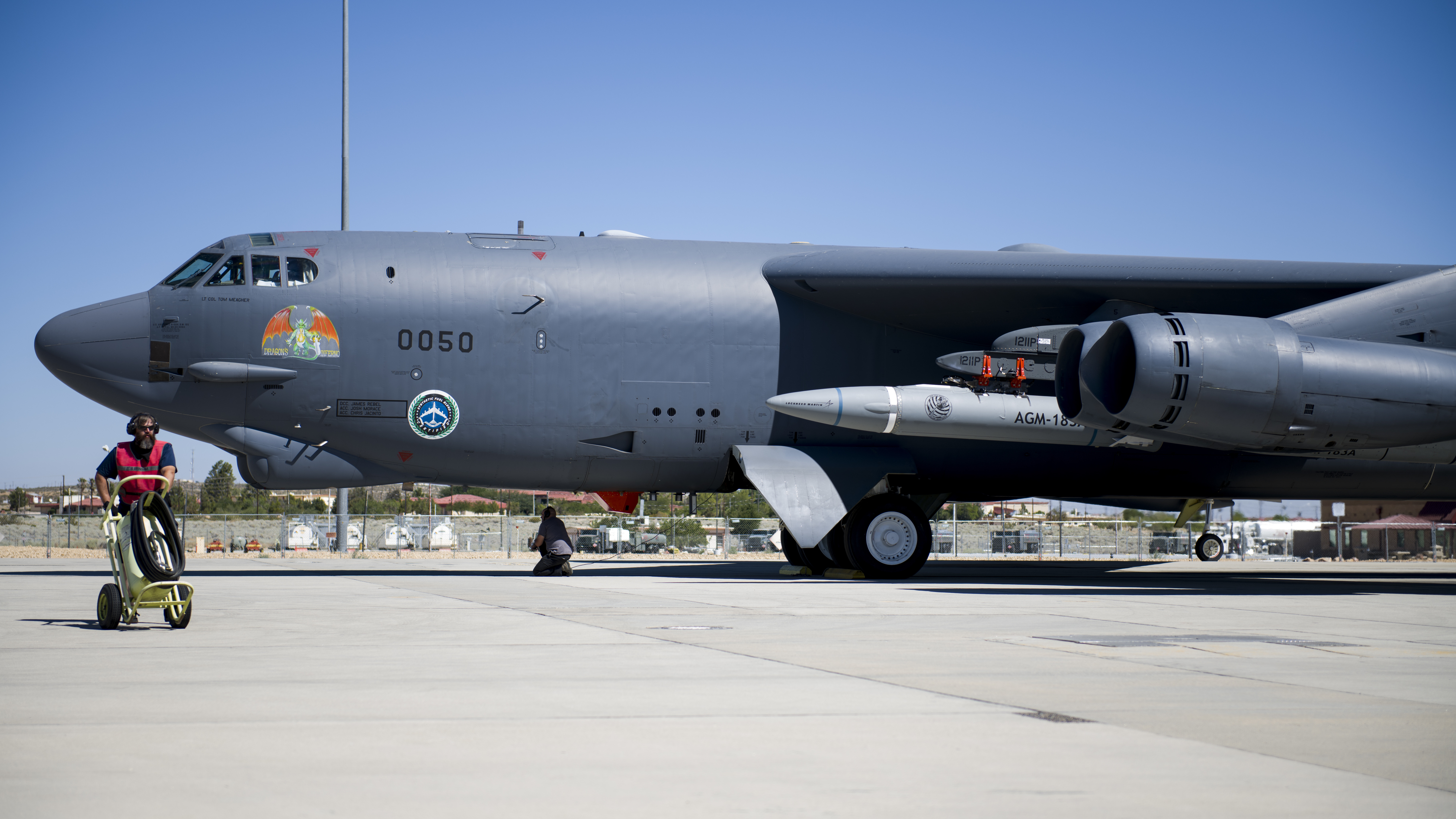
Some more work will be required to get the U.S. Air Force's new hypersonic weapon up to speed.
That system, known as the AGM-183A Air-launched Rapid Response Weapon (ARRW), is designed to launch in midair from beneath the wing of a carrier plane.
The missile was supposed to do that for the first time on Sunday (April 5), during a powered test flight off the coast of Southern California. But the prototype ARRW booster failed to deploy as planned from its B-52H Stratofortress, and the plane returned to Edwards Air Force Base with the missile still attached.
Related: The most dangerous space weapons of all time
"The ARRW program has been pushing boundaries since its inception and taking calculated risks to move this important capability forward," Brig. Gen. Heath Collins, Armament Directorate Program Executive Officer, said in an Air Force statement. "While not launching was disappointing, the recent test provided invaluable information to learn from and continue ahead. This is why we test."
Hypersonic vehicles travel at Mach 5 or above — at least five times faster than the speed of sound, which is about 761 mph (1,225 kph) at sea level. The ARRW system, which is built for the Air Force by aerospace giant Lockheed Martin, will apparently fly between Mach 6.5 and Mach 8, or 5,000 mph to 6,000 mph (8,050 kph to 9,650 kph), The Drive reported last fall.
Once the booster reaches such speeds, it will deploy an unpowered but maneuverable glide vehicle, which contains the warhead. Such maneuverability is the key differentiator between hypersonics and intercontinental ballistic missiles, which follow predictable trajectories.
Get the Space.com Newsletter
Breaking space news, the latest updates on rocket launches, skywatching events and more!
ARRW "is designed to provide the ability to destroy high-value, time-sensitive targets," the Air Force statement reads. "It will also expand precision-strike weapon systems' capabilities by enabling rapid-response strikes against heavily defended land targets."
To date, the Air Force has conducted seven ARRW "captive-carry" flights, in which the B-52H intentionally held onto the missile from takeoff to touchdown. Sunday's trial was supposed to be the first powered ARRW test. The goal was to demonstrate safe booster deployment and gather enough data to assess key elements of the missile system's performance, Air Force officials said.
More tests are likely in the near future, for the Air Force wants ARRW to be up and running in the early 2020s. If ARRW does become battle-ready, it will be a first; the U.S. has not yet fielded an operational hypersonic weapon system, despite extensive development work on several different concepts.
Mike Wall is the author of "Out There" (Grand Central Publishing, 2018; illustrated by Karl Tate), a book about the search for alien life. Follow him on Twitter @michaeldwall. Follow us on Twitter @Spacedotcom or Facebook.
Join our Space Forums to keep talking space on the latest missions, night sky and more! And if you have a news tip, correction or comment, let us know at: community@space.com.

Michael Wall is a Senior Space Writer with Space.com and joined the team in 2010. He primarily covers exoplanets, spaceflight and military space, but has been known to dabble in the space art beat. His book about the search for alien life, "Out There," was published on Nov. 13, 2018. Before becoming a science writer, Michael worked as a herpetologist and wildlife biologist. He has a Ph.D. in evolutionary biology from the University of Sydney, Australia, a bachelor's degree from the University of Arizona, and a graduate certificate in science writing from the University of California, Santa Cruz. To find out what his latest project is, you can follow Michael on Twitter.









